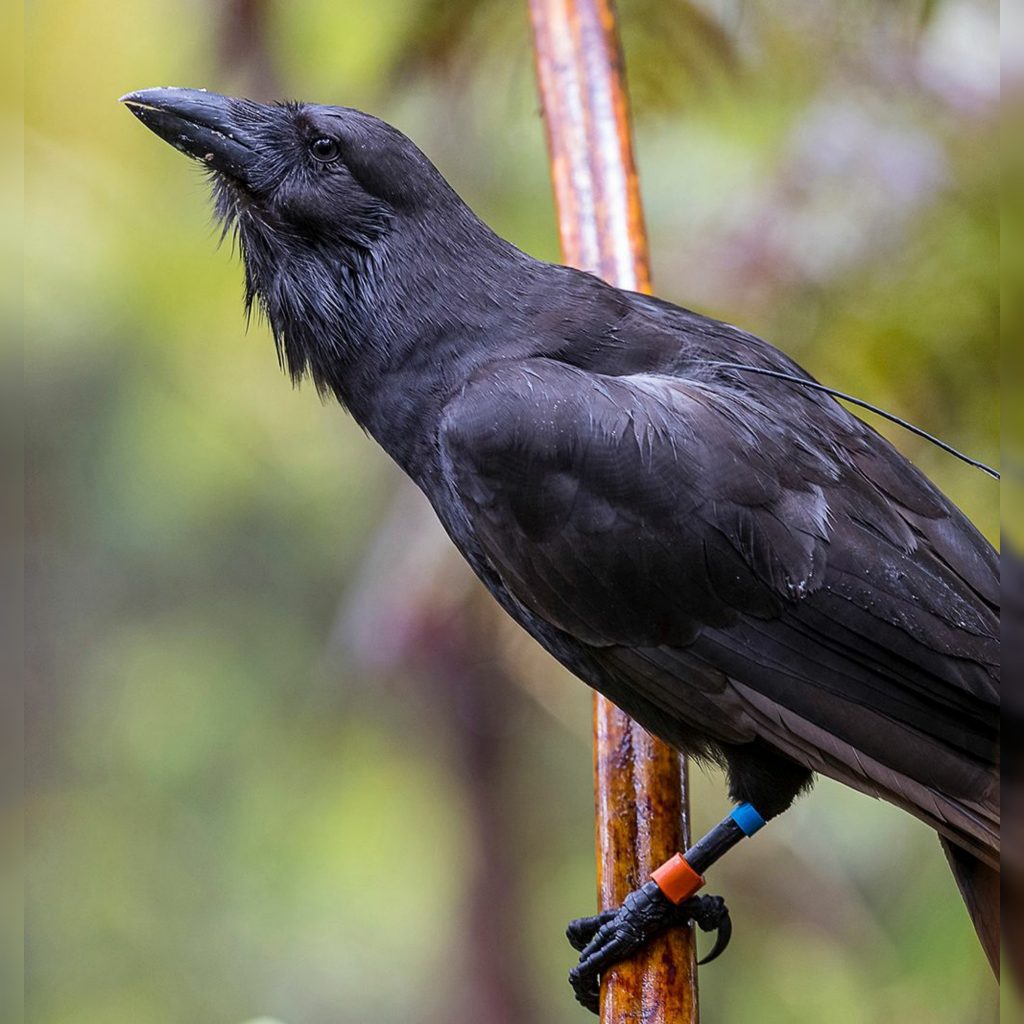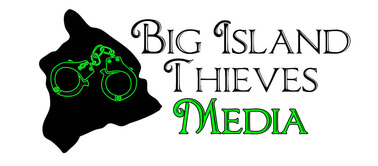
(Hilo) – The coalition of conservation partners working to recover the ‘alalā (also known as the Hawaiian crow) are looking to the future as they work to address recent challenges that have affected the population of the species living in the Pu’u Maka`ala Natural Area Reserve (NAR), on Hawai‘i island.
In response to recent mortatilities, including predation of the birds, mostly by ‘io (Hawaiian hawk), conservationists are bringing the remaining ‘alalā back from the wild into the conservation breeding program at the Keauhou Bird Conservation Center (KBCC). Having successfully lived in the wild for 2-3 years, these birds have knowledge about foraging, predator avoidance, and other social behaviors that could be passed on to the birds residing within the conservation breeding program and aid with future recovery efforts.
“For the last three years it has been encouranging to see the released birds transition to the wild; foraging, calling, and flying in native forests,” said Jackie Gaudioso-Levita, a biologist with the DLNR Division of Forestry and Wildlife (DOFAW) and the coordinator of The ‘Alalā Project. “It is important to ensure that these surviving ‘alalā are able to pass on the skills they have learned in the wild to future generations of the species. While very difficult, bringing these birds back into the breeding program is an interim step to the review and adaptation of the program to recover the species,” she added.
ʻAlalā have been rare for much of the 20th century, with fewer than 100 birds remaining in the wild by the 1960s due to habitat loss and fragmentation, invasive mammalian predators, introduced diseases, and perhaps other unknown factors. ʻAlalābecame extinct in the wild in 2002, preserved only at the KBCC and Maui Bird Conservation Centers managed by San Diego Zoo Global (SDZG). This conservation breeding population became the source for the reintroduction of ‘alalā beginning in 2016 to restored forests in the NAR. The reintroduced population, closely monitored by conservationists with DOFAW and the SDZG’s Hawai‘i Endangered Bird Conservation Program, has survived for the last few years, even attempting to breed in the wild.
Recovering the ʻalalā in the wild will take many years. By working as partners and utilizing tools such as conservation breeding the road to recovery will be similar to the recovery of other reintroduced species.
“The U.S. Fish and Wildlife Service is committed to the recovery of ‘alalā,” said Michelle Bogardus, Maui Nui & Hawaiʻi Island Team Manager, Pacific Islands Fish and Wildlife Office. “Strong conservation partnerships are essential for the recovery of threatened and endangered species. Working together, the many partners in The ‘Alalā Project will determine the next steps for this iconic species.”
“San Diego Zoo Global has a depth of experience in recovery programs and we are confident that we can work with our distinguished partners to address this challenge and continue our work to recover the ‘alalā,” said Paul Baribault, chief executive officer and president of SDZG. “This species is important not only to the recovery of Hawaiian forests but also to Hawaiian culture, and our organization is committed to creating a world where wildlife and people thrive together.”
“We remain committed to this project and have always known that there would be some setbacks and challenges along the way. Fortunately the project has an extremely knowledgeable, dedicated and passionate team and we believe this level of care and consideration for the ‘alalā, will hopefully in time, see a re-establishment of a wild population,” said David Smith, administrator for the DLNR Division of Forestry and Wildlife.
The recaptured birds will rejoin the population of more than 100 ‘alalā being cared for within the SDZG’s conservation breeding program. As the dedicated project staff are working tirelessly to recapture and protect the remaining birds, they are driven by the vision that the goal of ‘Alalā recovery is still attainable.
